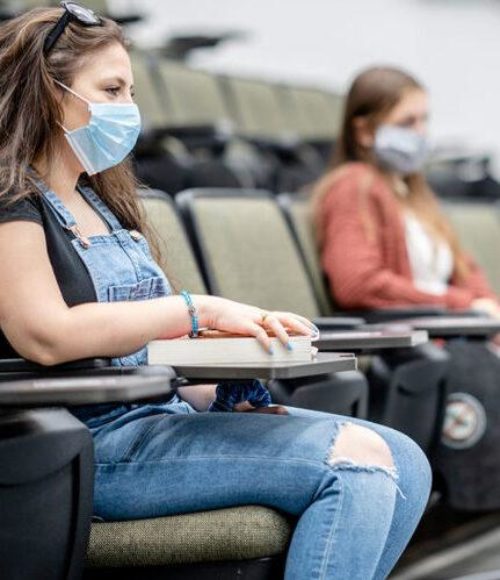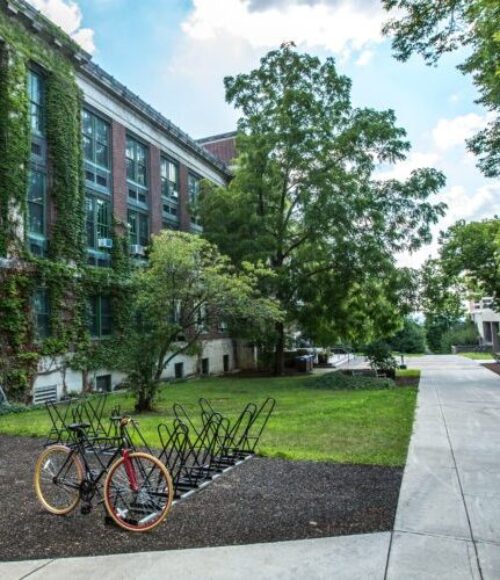Rethinking What We Consider Essential

How do you differentiate between what you want and what you need? Between “nice to have” and “have to have.” Between optional and essential?
I’ve spent quite a bit of time winter camping in the mountains, and I can tell you this: when you’re snowshoeing in sub-zero temperatures, determining what to put in your backpack is a crucial decision. Every ounce matters. Every item matters. The bright line for what’s essential and what isn’t becomes crystal clear.
There’s never been a better time to reevaluate what we deem essential. This buzzword has dominated news headlines during the COVID-19 pandemic, with a focus on workers and services that are imperative to the continued functioning of society. But I’d like to challenge us to think beyond the obvious and expand the concept into all personal and professional spheres—including higher education.
I realize that’s difficult to ask for in a world where we’re constantly pushed toward pursuing what’s aspirational and desirable. Personally, I’ve been privileged to have more than the essential for most of my life, and I haven’t always appreciated it as much as I could have.
One of the silver linings of this pandemic—what I like to call our “Maslovian Moment”—is that it has forced us all to return to the basics. A good friend of mine is fond of saying, “If you don’t leave the basics, you never have to ‘go back to basics.’” In other words, if you don’t get accustomed to living with more than what you need, you’ll never feel the loss of going without what’s truly unnecessary.
How do we apply such a theoretical concept to the reality of academia, to the decisions and choices university leaders need to make on a daily basis? How do we prioritize the essential so that we never lose sight of what matters most?
I’d humbly suggest a focus on the following:
Return to your core mission.
When a university—or any organization—is clear about its mission, determining what’s essential to serve its core values becomes a much simpler task.
Having clear organizational values has been one of our greatest assets at MindMax. We’re a values-driven company, and this defining feature has helped me make many important (and sometimes difficult) decisions over the years. And yet I still struggle in the face of excess. When you experience success, the “nice to haves” quickly turn into necessities.
Higher education has undoubtedly experienced this double-edged sword of success—and even excess. In the competition to be more exclusive or attract top-tier students, there is often outsized focus on facilities and amenities. Beautiful dorms and outstanding food are wonderful perks, but they aren’t crucial for a good education. Sticking close to your mission can help your institution make well-aligned choices about how to use its resources.
Reconsider what’s essential.
Most of the extracurricular activities and special offerings that schools rely on as differentiators have fallen by the wayside over the past year. A rock climbing wall or a tennis team simply aren’t essential during a pandemic, as the benefits don’t outweigh the risks. (As we’ve seen, every school has to make those decisions for themselves, and sports that serve as financial lifelines, such as football, sometimes are deemed to be essential.)
Even the way we evaluate performance may be inconsequential under our unusual circumstances. Hundreds of schools have forgone ACT and SAT scores for admissions and joined the test-optional movement, at least for a year or two. Some schools have even forgone grades entirely in favor of pass/fail systems. These unprecedented decisions would have been inconceivable 20 years ago—or even as recently as last year.
Make safety a top priority.
Colleges and universities are experts at constructing emotionally and intellectually safe spaces for students. Safety is paramount: it’s an uncompromising value that schools should provide, not just for students, but for their entire communities. During the COVID-19 pandemic, institutions have been challenged to meet a heightened standard of safety as well.
When evaluating what’s essential, I encourage schools to acknowledge that while academic pursuits are part of your mission, safety must come first. As Maslow’s hierarchy of needs teaches us, it’s important to establish base needs, then work up to being a self-actualized institution that can provide those higher-level aspirational services.
Much like packing for a winter camping trip, there’s a bright line right now illuminating what’s essential—and what isn’t. Administrators have the challenging job of making tough decisions about what to keep and what to let go of. Their choices may be unpopular in the moment, or even unappreciated by the communities they serve. Even so, higher ed must rise to the occasion.
This unprecedented moment is more than a fire drill: it’s a catalyst for long-term change. Institutions that have embraced this new way of existing (or those that were already diversified in their approach) can and will continue to thrive.
Related Ideas
The Gig Economy is Here to Stay—What Does That Mean for Higher Ed?


